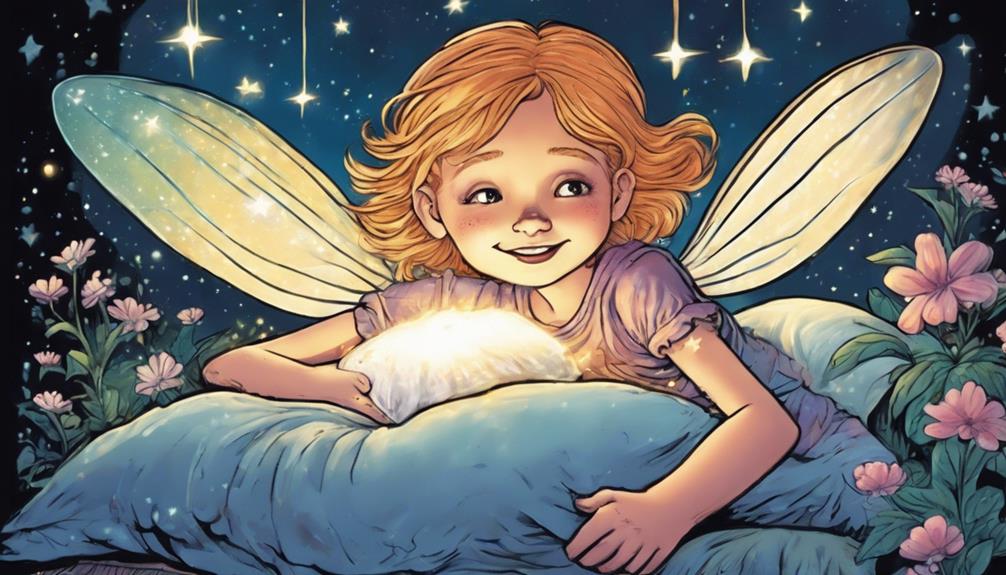Babies typically start teething around 6 months. The first teeth to appear are the lower central incisors, usually followed by the upper central incisors within a few months. Next, the lateral incisors come in, followed by the first molars and canines. By age three, your little one will have a complete set of 20 primary teeth. During this time, you might notice increased drooling, fussiness, and swollen gums as teething discomfort arises. It's important to maintain good oral hygiene right from the start, and there's much more to explore on this important topic.
Key Takeaways
- Babies typically begin teething around 6 months, with the first tooth often being the lower central incisors.
- Upper central incisors usually emerge between 8 to 12 months, followed by lateral incisors.
- By age 3, children generally have a complete set of 20 primary teeth.
- Teething symptoms may include increased drooling, irritability, and swollen gums.
Teething Timeline Overview

Teething usually kicks off when your baby's first tooth starts to emerge between 6 to 12 months of age.
Typically, babies start teething with the lower central incisors, which usually break through first, around 6 to 10 months. These small teeth pave the way for the next set to arrive. After the lower central incisors, you can expect the upper central incisors to appear, usually between 8 to 12 months.
As your baby continues this teething journey, lateral incisors will emerge next, with the upper ones appearing between 9 to 13 months and the lower ones around 10 to 16 months.
By the time your child reaches age 3, you'll find they've a complete set of 20 primary teeth, with 10 in the upper jaw and 10 in the lower jaw.
It's important to remember that while there's a general order to baby teeth eruption, individual timelines can vary considerably. Some babies may show signs of teething as early as 3 months or as late as 12 months without any teeth.
Order of Tooth Eruption

When your baby starts teething, you'll notice a specific order in which their teeth emerge.
Typically, it begins with the lower central incisors around 6 to 10 months, followed by the upper central incisors.
Understanding this timeline can help you anticipate your little one's dental development.
Eruption Timeline Overview
The eruption of primary teeth follows a specific timeline, starting with the lower central incisors around 6 to 10 months of age.
As your baby grows, you'll notice more teeth making their appearance. Generally, the upper central incisors come next, emerging between 8 to 12 months. Around the same time, the upper lateral incisors typically appear from 9 to 13 months, while the lower lateral incisors follow suit from 10 to 16 months.
At about 13 to 19 months, the upper first molars begin to erupt, and soon after, the lower first molars emerge between 14 to 18 months. This eruption timeline is essential for tracking your baby's dental development.
By the age of 3, most children will have a full set of 20 primary teeth, which include a mix of incisors and molars.
Understanding this timeline helps you prepare for teething phases and any discomfort your baby may experience. Remember, each baby is different, and while these timelines are typical, there can be variations.
Keeping an eye on your baby's teeth will make this journey smoother for both of you.
Sequence of Tooth Emergence
Understanding the sequence of tooth emergence helps you anticipate which teeth will appear next in your baby's mouth. The order of tooth eruption typically starts with the lower central incisors, followed by the upper central incisors. Here's a quick overview of what to expect:
| Age Range (Months) | Teeth Erupted | Type of Teeth |
|---|---|---|
| 6 to 10 | Lower Central Incisors | First Tooth |
| 8 to 12 | Upper Central Incisors | Primary Teeth |
| 9 to 13 | Upper Lateral Incisors | Primary Teeth |
| 10 to 16 | Lower Lateral Incisors | Primary Teeth |
| 13 to 19 | Upper First Molars | Primary Teeth |
| 14 to 18 | Lower First Molars | Primary Teeth |
Recognizing Teething Symptoms

Teething symptoms can be quite noticeable, often manifesting as increased drooling, irritability, and swollen gums in your baby. You might see your little one drooling more than usual, and their gums may appear tender and red. This discomfort can lead to fussiness or crankiness, especially during times when teeth are pushing through the gums.
Around 3 months of age, you may notice these signs as your baby's teeth begin to emerge. They might even gnaw on their fingers or nearby objects to find relief. While a slight temperature rise can accompany teething, remember that a true fever (over 38°C) usually indicates an illness unrelated to teething.
It's essential to differentiate teething symptoms from other health issues. If your baby experiences high fever or diarrhea, seek medical advice, as these signs typically suggest a separate medical concern.
Soothing Teething Discomfort

Finding ways to soothe your baby's teething discomfort can make this challenging phase a bit easier for both of you. As your little one experiences increased drooling, irritability, and swollen gums, it's important to find effective methods for relief.
One of the simplest ways to provide comfort is by gently massaging your baby's gums with a clean finger. This direct touch can help ease the pain associated with teething.
Using cold items can also be beneficial. Teething rings that have been chilled in the refrigerator or frozen washcloths can soothe sore gums effectively. The cold numbs the area and reduces inflammation, offering much-needed relief. Make certain to supervise your baby when using these items to guarantee safety.
In some cases, if the discomfort seems severe, consider consulting your pediatrician about over-the-counter pain relievers. Just remember to avoid products containing benzocaine, as they can be harmful.
Keep an eye on your baby's symptoms; a high fever or diarrhea might signal other health issues rather than just teething discomfort.
Importance of Dental Hygiene

Starting a dental hygiene routine early is essential for your baby's long-term oral health.
By cleaning your infant's gums and brushing their first teeth, you're establishing healthy habits that can prevent future dental problems.
Regular check-ups and proper care now set the foundation for a lifetime of smiles.
Early Oral Care
Establishing good dental hygiene early on is essential for your baby's oral health and sets the foundation for a lifetime of healthy habits. Start with early oral care by gently cleaning your baby's gums using a soft cloth or gauze before the first tooth erupts. Once that first tooth appears, introduce brushing using a smear of fluoride toothpaste for infants.
It's vital to brush teeth at least twice a day, especially after meals, to prevent tooth decay. Avoid putting your baby to bed with a bottle to reduce the risk of dental problems. Regular dental check-ups should begin by age 1 or when the first tooth emerges, helping you monitor dental health and receive guidance on oral care.
Here's a quick reference table for your early oral care routine:
| Age Range | Care Instructions | Recommended Products |
|---|---|---|
| Birth to 6 months | Clean gums with a soft cloth | Soft cloth or gauze |
| 6 months to 3 years | Brush with fluoride toothpaste | Smear for infants |
| 3 years and older | Brush with a pea-sized amount | Fluoride toothpaste |
| 1 year and older | Schedule dental check-ups | Pediatric dentist |
Establishing Healthy Habits
Creating a consistent dental hygiene routine from the earliest days not only protects your baby's teeth but also lays the groundwork for lifelong healthy habits.
Start by cleaning your baby's gums even before the first tooth emerges, as this helps instill the importance of dental hygiene early on. Once that first tooth appears, introduce brushing teeth with a small smear of fluoride toothpaste. Gradually increase to a pea-sized amount for children over age 3, ensuring you brush twice daily to prevent tooth decay.
It's essential to avoid putting your baby to bed with a bottle, as sugary liquids can linger on teeth overnight, leading to 'baby bottle tooth decay.' Establishing these healthy habits now can prevent issues later.
Regular dental check-ups should begin by age 1 or when the first tooth erupts, allowing you to monitor your baby's dental development while reinforcing the significance of dental care.
Tips for First Dental Visits

Scheduling your child's first dental visit by age 1 or when their first tooth appears helps set the foundation for a lifetime of healthy smiles. During this initial appointment, the pediatric dentist will examine your child's teeth, gums, and overall oral health. They'll also provide guidance on proper hygiene practices to maintain those precious little smiles.
Before the visit, it's a good idea to bring a list of any questions or concerns you have about your child's dental development or teething issues. This way, you won't forget anything important. To minimize anxiety, prepare your child for the appointment by explaining what to expect in a positive and reassuring way.
Regular dental check-ups every six months are essential as your child develops more teeth. These visits help monitor growth and prevent decay, ensuring your child's oral health stays on track. If your child experiences discomfort from teething, don't hesitate to ask the dentist about safe teething gels and other remedies.
Cultural Perspectives on Teething

Exploring cultural perspectives on teething reveals a rich tapestry of beliefs and practices that shape how families navigate this important developmental milestone. You might find these aspects intriguing:
- Spiritual beliefs: Some cultures attribute teething symptoms to spiritual causes, influencing their approach.
- Herbal remedies: Many communities utilize plant-based solutions to alleviate discomfort, highlighting traditional medicinal practices.
- Teething celebrations: Specific ceremonies or family gatherings commemorate the arrival of a child's teeth, marking this milestone.
- Nutrition: Certain cultures emphasize particular foods or textures to soothe teething pain, underscoring the importance of nutrition during this stage.
Understanding these varied cultural practices helps you appreciate the different ways families cope with teething symptoms.
By incorporating elements like herbal remedies or engaging in teething celebrations, you can foster a more supportive environment for your child.
Embracing these perspectives can enrich your parenting approach, ensuring that you're not only addressing the physical discomfort but also honoring the cultural significance of this developmental phase.
Frequently Asked Questions
What Is the Order of Teeth Coming in for a Baby?
When you observe your baby's teeth coming in, you'll typically see the lower central incisors first, followed by the upper central incisors, then the lateral incisors, and finally the molars. It's an exciting progression!
Which Teeth Are Most Painful for Babies?
You've seen your little one wince in pain, haven't you? The lower central incisors usually hurt the most, followed by the upper incisors and molars, each causing their own wave of discomfort as they emerge.
When Do Teeth Come in a Chart?
You can track your child's dental development with a simple chart. Typically, lower central incisors appear first, followed by upper incisors, lateral incisors, and molars, culminating in a full set by age three.
Which Teeth Should Come First in Babies?
When it comes to your baby's teeth, the lower central incisors usually make their debut first. It's the first step in their dental journey, paving the way for a bright, toothy grin ahead!
At What Age Do Babies Start Getting Teeth?
Babies typically start getting their first teeth, which are known as “baby teeth” or deciduous teeth, around 6 months of age. However, the timing can vary, as some babies may start teething as early as 3 months or as late as 12 months. It’s important to monitor what teeth do babies get and provide relief for their discomfort during this milestone. Baby teeth development is a gradual process, with most children having a full set of 20 baby teeth by the age of 3. These teeth play a crucial role in the development of a baby’s speech and also help them chew their food properly. Providing teething toys or gently massaging the baby’s gums can help alleviate their discomfort during this stage of baby teeth development. Teething symptoms in infants can include increased drooling, irritability, and a desire to chew on objects. Some babies may also experience swollen or tender gums, as well as a slight increase in body temperature. It’s important for parents to be aware of these symptoms and provide comfort and relief for their little ones as they reach this developmental milestone. By understanding and addressing teething symptoms in infants, caregivers can help make the process as smooth as possible for their babies.
At What Age Do Babies Typically Start Teething?
Babies typically start teething around 6 months old, but it can vary. Some may begin as early as 3 months, while others may not start until they’re 1 year old. It’s important to monitor teeth development in babies and provide soothing remedies for any discomfort.
Conclusion
In summary, understanding your baby's teething journey makes the process smoother for both of you.
As those tiny teeth burst through like little stars lighting up the night sky, remember to soothe any discomfort with love and care.
Keeping up with dental hygiene is essential, even for those first precious pearly whites.
Embrace the adventure of teething, and don't forget to schedule those first dental visits—it's all part of watching your little one grow!









